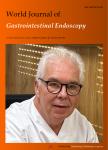Identification of factors associated with sedation tolerance in 5000 patients undergoing outpatient colonoscopy:Canadian tertiary center experience
Identification of factors associated with sedation tolerance in 5000 patients undergoing outpatient colonoscopy:Canadian tertiary center experience作者机构:Department of GastroenterologyFaculty of MedicineUniversity of TorontoToronto General Hospital Department of GastroenterologyFaculty of MedicineUniversity of British Columbia Division of GastroenterologySaint Paul Hospital
出 版 物:《World Journal of Gastrointestinal Endoscopy》 (世界胃肠内镜杂志(英文版)(电子版))
年 卷 期:2016年第8卷第20期
页 面:770-776页
学科分类:1002[医学-临床医学] 100201[医学-内科学(含:心血管病、血液病、呼吸系病、消化系病、内分泌与代谢病、肾病、风湿病、传染病)] 10[医学]
基 金:the Department of Gastroenterology of the Saint Paul Hospital for the support with this project
主 题:Colonoscopy Sedation Sedation tolerance Fentanyl Midazolam Predictive model
摘 要:AIM To develop a prediction model aimed at identifying patients that may require higher than usual sedation doses during *** A retrospective chart review on 5000 patients who underwent an outpatient colonoscopy at *** s Hospital from 2009 to 2010 was conducted in order to develop a model for identifying patients who will require increased doses of *** predictor variables including age,gender,endoscopy indication,high sedation requirements during previous endoscopies,difficulty of the procedure,bowel preparation quality,interventions,findings as well as current use of benzodiazepines,opioids and alcohol were *** outcome of study was the use ofhigh dose of sedation agents for the *** particular,the high dose of sedation was defined as fentanyl greater than 50 mcg and midazolam greater than 3 *** Analysis of 5282 patients(mean age 57 ± 12,49% female) was *** common indication for the procedure was screening colonoscopy(57%).Almost half of our patients received doses exceeding Fentanyl 50 mcg and Midazolam 3 *** regression models identified the following variables associated with high sedation:Younger age(OR=0.95 95%CI:0.94-0.95;P 0.0001);abdominal pain(OR=1.45,95%CI:1.08-1.96);P=0.01) and Inflammatory Bowel Disease(OR=1.45,95%CI:1.04-2.03;P=0.02) as indications for the procedure;difficult procedure as defined by gastroenterologist(OR=1.73,95%CI:1.48-2.03;P 0.0001);past history of abdominal surgery(OR=1.33,95%CI:1.17-1.52;P 0.0001) and previous colonoscopy(OR=1.39,95%CI:1.21-1.60;P=0.0001) and alcohol use(OR=1.26,95%CI:1.03-1.54;P=0.02).Age and gender adjusted analysis yielded inflammatory bowel disease as an indication(OR=3.17,95%CI:1.58-6.37;P=0.002);difficult procedure as defined by an endoscopist(OR=5.13 95%CI:2.97-8.85;P=0.0001) and current use of opioids,benzodiazepines or antidepressants(OR=2.88,95%CI:1.74-4.77;P=0.001) having the highest predictive value of high sedation require



